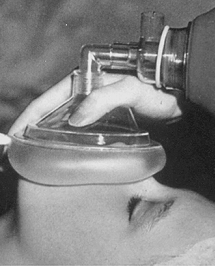Study seeks gas saving
 Nitrous oxide, also known as laughing gas, is a common and effective painkiller for use in childbirth, but it is a greenhouse gas, and experts are trying to reduce its environmental impact.
Nitrous oxide, also known as laughing gas, is a common and effective painkiller for use in childbirth, but it is a greenhouse gas, and experts are trying to reduce its environmental impact.
A study published in the journal of the Association of Anaesthetists shows the potential for using ‘cracking’ technology to reduce the environmental impact of nitrous oxide (N2O).
The study was conducted by a multidisciplinary team of anaesthetists and midwives, from St John’s Hospital, Livingston, UK and Manchester University NHS Foundation Trust, Manchester, UK.
All inhaled anaesthetic gases in common use today are greenhouse gases.
Compared to an equivalent mass of carbon dioxide (CO2), nitrous oxide has 265 times the global warming potential.
Nitrous oxide, the painkilling component of ‘gas and air’, is the most frequently used labour painkiller in the UK, and is available in all birth settings. Thus, any intervention that reduces nitrous oxide release into the atmosphere has the potential to significantly reduce the environmental impact of this medication.
One method which may reduce the carbon footprint of nitrous oxide is to break down (‘crack’) the exhaled gas into nitrogen and oxygen using a catalyst.
Previous research has established the efficiency of this process – however, to be effective in practice, as much exhaled nitrous oxide as possible must be ‘scavenged’ (captured) so that it can be broken down. This relies on patients being able to consistently breathe out into a mask or mouthpiece.
Researchers have now assessed the impact of nitrous oxide cracking technology in the maternity setting.
Nitrous oxide levels were recorded during the final 30 minutes of uncomplicated labour in 36 cases.
In the first 12 cases, readings were taken without the use of the technology to establish a baseline.
Subsequently, the study team introduced the cracking device, and took a stepwise approach to optimising its clinical use. This involved using a mouthpiece, then two different types of facemask, and providing patients with tips for use and feedback.
The results showed that median ambient nitrous oxide levels were 71 per cent lower than baseline when using a mouthpiece, and 81 per cent lower when using a low-profile facemask (a lightweight facemask with a flexible seal) together with coaching on how best to use it.
“Given that a similar magnitude of reduction in nitrous oxide levels was seen with mouthpieces and low-profile facemasks, we suggest that pregnant women should be offered the option of either device when cracking is used,” the authors say.
“Education for pregnant women and choice in use of device is vital given the high degree of co-operation required [for the successful use of the technology], and this is consistent with guidelines for choice and personalised care in maternity services.
“Future research to better characterise the optimal use of this technology could focus on investigating other delivery device types, and considering the optimal timing and method of education – for example, is the antenatal clinic a better place to discuss this technology than during the birth period?”








 Print
Print